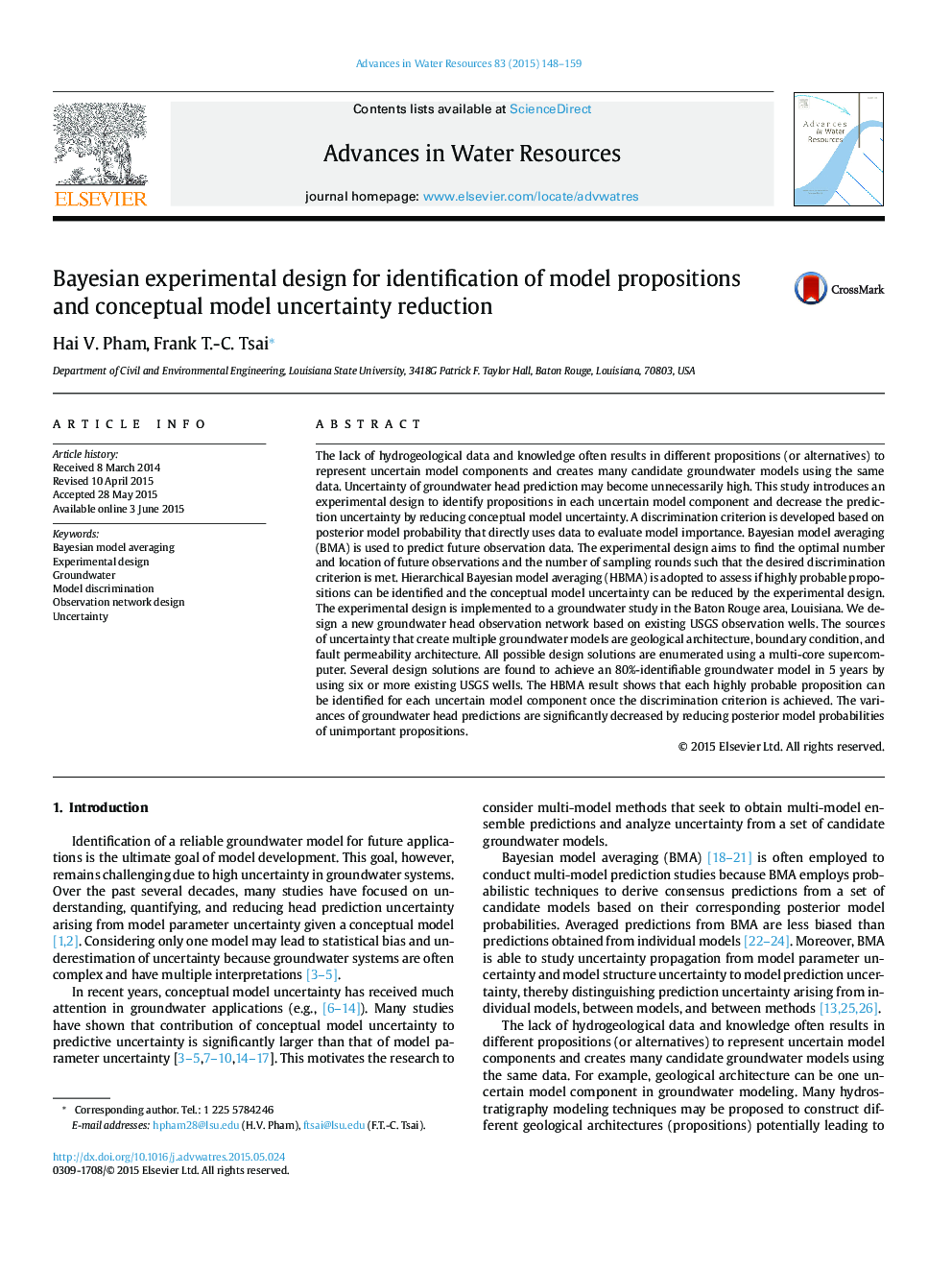| کد مقاله | کد نشریه | سال انتشار | مقاله انگلیسی | نسخه تمام متن |
|---|---|---|---|---|
| 6380911 | 1625626 | 2015 | 12 صفحه PDF | دانلود رایگان |
عنوان انگلیسی مقاله ISI
Bayesian experimental design for identification of model propositions and conceptual model uncertainty reduction
ترجمه فارسی عنوان
طراحی تجربی بیزی برای شناسایی پیشنهادات مدل و کاهش عدم قطعیت مدل مفهومی
دانلود مقاله + سفارش ترجمه
دانلود مقاله ISI انگلیسی
رایگان برای ایرانیان
کلمات کلیدی
میانگین بیزی مدل، طراحی تجربی، آب های زیرزمینی، تبعیض مدل، طراحی شبکه نظارت، عدم قطعیت،
موضوعات مرتبط
مهندسی و علوم پایه
علوم زمین و سیارات
فرآیندهای سطح زمین
چکیده انگلیسی
The lack of hydrogeological data and knowledge often results in different propositions (or alternatives) to represent uncertain model components and creates many candidate groundwater models using the same data. Uncertainty of groundwater head prediction may become unnecessarily high. This study introduces an experimental design to identify propositions in each uncertain model component and decrease the prediction uncertainty by reducing conceptual model uncertainty. A discrimination criterion is developed based on posterior model probability that directly uses data to evaluate model importance. Bayesian model averaging (BMA) is used to predict future observation data. The experimental design aims to find the optimal number and location of future observations and the number of sampling rounds such that the desired discrimination criterion is met. Hierarchical Bayesian model averaging (HBMA) is adopted to assess if highly probable propositions can be identified and the conceptual model uncertainty can be reduced by the experimental design. The experimental design is implemented to a groundwater study in the Baton Rouge area, Louisiana. We design a new groundwater head observation network based on existing USGS observation wells. The sources of uncertainty that create multiple groundwater models are geological architecture, boundary condition, and fault permeability architecture. All possible design solutions are enumerated using a multi-core supercomputer. Several design solutions are found to achieve an 80%-identifiable groundwater model in 5 years by using six or more existing USGS wells. The HBMA result shows that each highly probable proposition can be identified for each uncertain model component once the discrimination criterion is achieved. The variances of groundwater head predictions are significantly decreased by reducing posterior model probabilities of unimportant propositions.
ناشر
Database: Elsevier - ScienceDirect (ساینس دایرکت)
Journal: Advances in Water Resources - Volume 83, September 2015, Pages 148-159
Journal: Advances in Water Resources - Volume 83, September 2015, Pages 148-159
نویسندگان
Hai V. Pham, Frank T.-C. Tsai,
